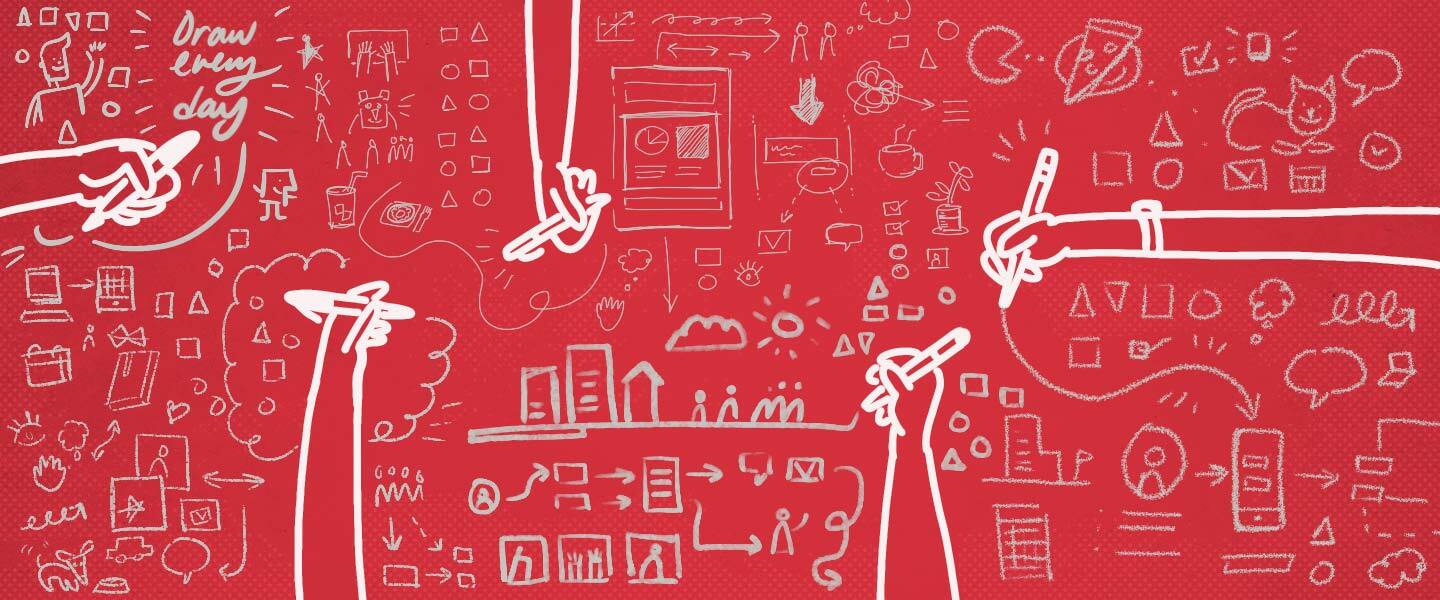When we were kids, drawing was second nature. As soon as we could pick things up, we slowly turned our gaze to crayons and construction paper. Scribbles became stick figures. Stick figures morphed into humans with clothes on. Years before we could write words, our first form of recorded communication was sketching. But, at some point, we stopped drawing and we started writing, eventually putting down the pencil altogether in favor of a keyboard and trackpad. We probably convinced ourselves that drawing was for kids and talented art-school types.
Well, it’s time to un-convince ourselves: we can draw. Every day! And it will make a difference in our lives.
Why draw every day?
Let’s get some stuff out of the way: at LUMA we believe in the Herb Simon definition of design: if you’re working to change existing situations into preferred ones, you’re “designing.” That means everyone is a designer. Sound good? Great!
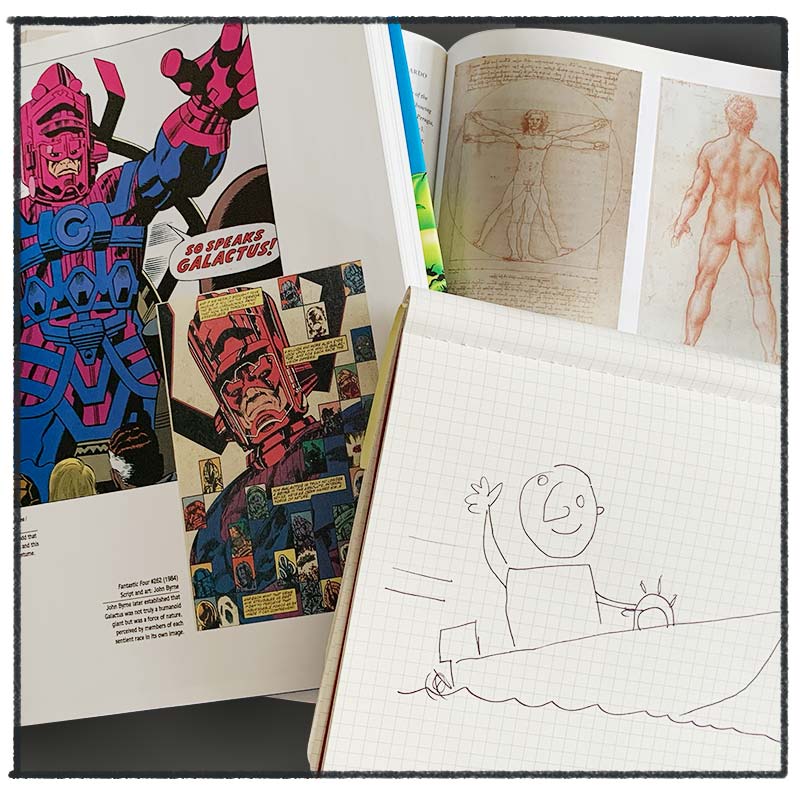
So if everyone can design, surely everyone can be visual — everyone can draw. That doesn’t mean striving to draw like Jack Kirby or Da Vinci. Heck, you can draw like “Picasso sitting on a speedboat” and still make something that helps you and others understand a concept, envision a future, or align around an idea. Just the act of doodling in a meeting has been shown to increase our ability to retain and process information.
The research makes it clear: this stuff works. The challenging part isn’t necessarily the act of drawing; it’s the habit and the mindset around it that needs work. If you build up the habit of drawing every day, and if you approach it with the mindset of “drawing to communicate,” you’ll find that being visual can become second nature, again.
First: make it the easiest thing you can do at your desk
As James Clear writes in his book Atomic Habits, one way to develop a new habit is to consider how we design our environment. How might we make our workspace so conducive to drawing that we don’t even think about opening our laptop? To start, resist the urge to have your desk be a pristine, tidy, clean slate like Pinterest might suggest. Instead, keep blank paper, writing utensils, and notebooks within arm’s reach. Also, find tools that you love and stock up on them.
I recommend going with multiple sizes of paper: I prefer sticky notes, blank notecards, and a large Moleskin notebook with grid lines or dots. Then find the simplest and most-reliable pens or markers that work for you: I like PaperMate Flair pens for little drawings; Sharpies for big, fast drawings; and PrismaColor markers when I want to be fancy. Really, the type of tool doesn’t matter – but having it handy at all times does.
Simply seeing this stuff on your desk will likely give you a mental cue to start drawing.
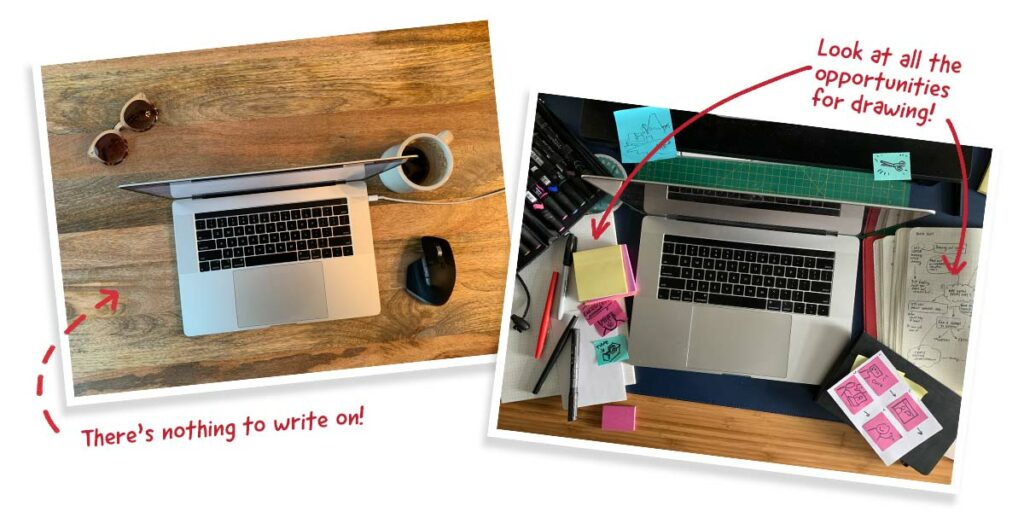
Next: find reasons to draw
To build up your confidence and continue to retrain your brain that you can draw, I recommend starting with some simple sketches just for you to see. When you sit down at your desk to kick off your workday, try doodling:
- Take a couple minutes to draw something that you can see in your workspace. Maybe sketch your coffee cup, your cat, or that weird piece of art you found at a yard sale.
- If you have a morning meeting over Zoom, try doodling the faces of your colleagues (you can decide later if you want to show them).
- Or just practice drawing basic shapes. Sketching a bunch of squares, circles, and triangles is a great way to get your brain used to being more visual — and as our CEO, Chris, will show you, those shapes will help you draw anything in the universe.
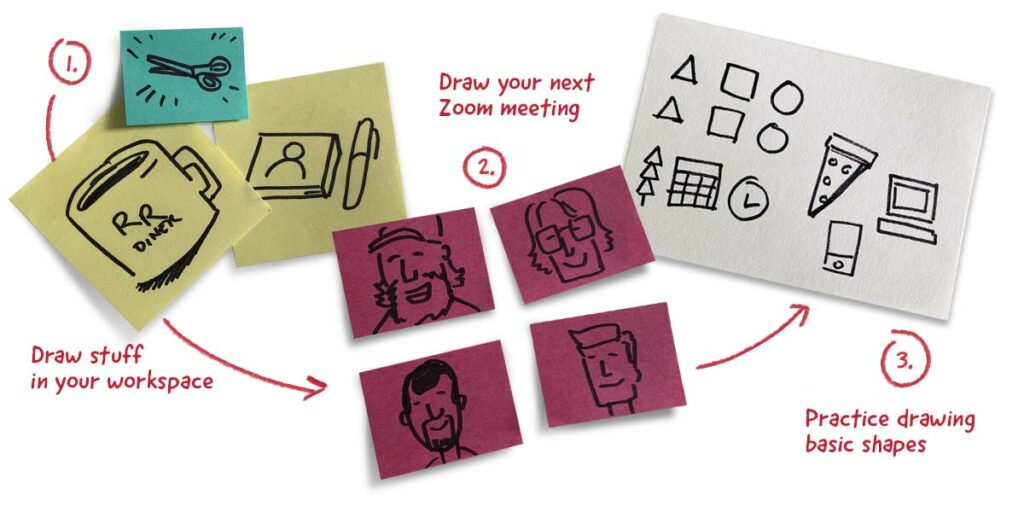
Once you’re warmed up, you can start using drawing skills actively in your day-to-day work. If you’d like to increase shared understanding, I recommend making meeting notes more visual: any time I have a discussion about a project, I like to create a Concept Map of the conversation — it’s a helpful note-taking technique that can be referenced later, and it’s quicker than taking detailed notes.
In preparing to write this blog post, I drew a Concept Map (contains spoilers!):
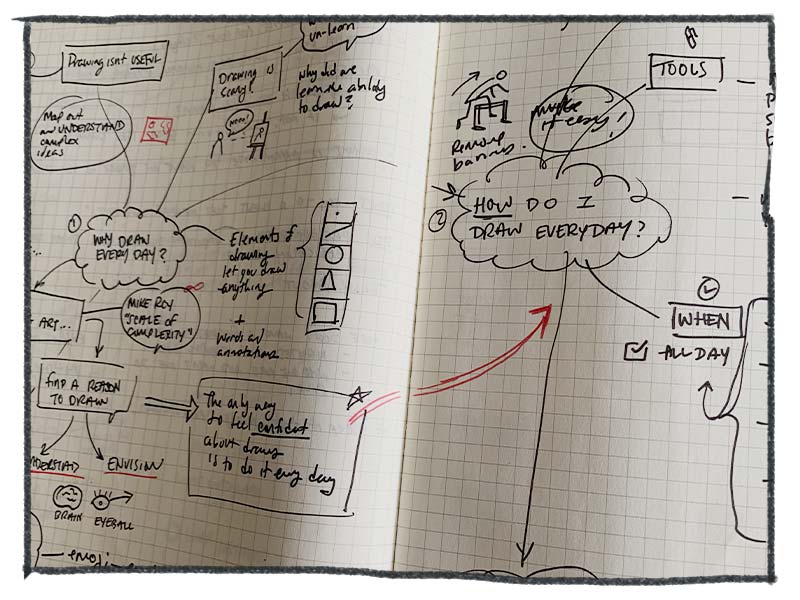
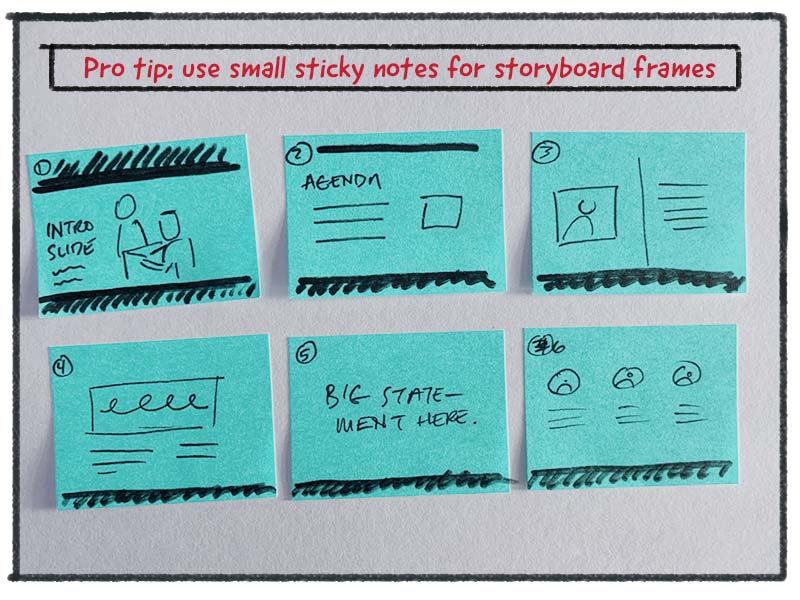
If I have a presentation I need to give, I don’t jump into PowerPoint and start building right away. I create a tiny storyboard of the slides I intend to create using some tiny sticky notes and a pen. It helps me envision, at a high altitude, what my presentation might look like.
At some point, I got into the habit of drawing thumbnail sketches next to my written notes — even ones I leave around the house for my family. Think of it as adding hand-drawn emojis to analogue text messages and to-do lists.
Last thing: keep drawing all the time!
Now that you’re building up a habit of communicating visually through drawing every day, keep it up! Surround yourself with piles of scrap paper covered in scribbles. Draw arrows between words. Doodle little icons in your notes. When you draw something you feel good about, show it to people. Sketch a diagram and hold it up to the camera on your next Zoom meeting. Start to think of yourself as “a person who can draw.” It’s a great way to live.
For a deeper dive into tips, techniques, and methods around drawing, I highly recommend you check out our video class “The Power of Working Visually” on LUMA Workplace®.

